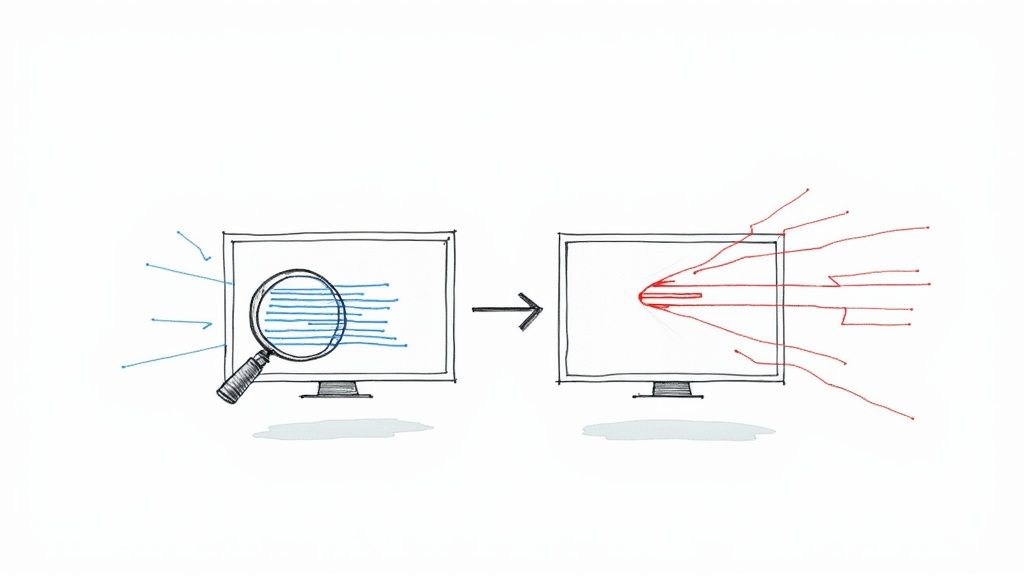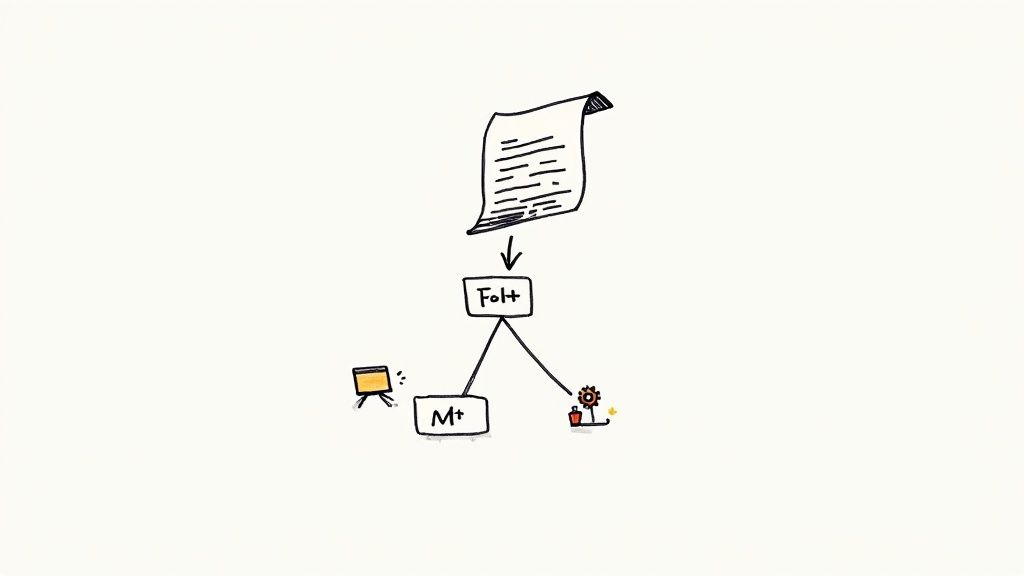Essential CI/CD Pipeline Best Practices: A Complete Guide to Mastering Continuous Integration and Delivery
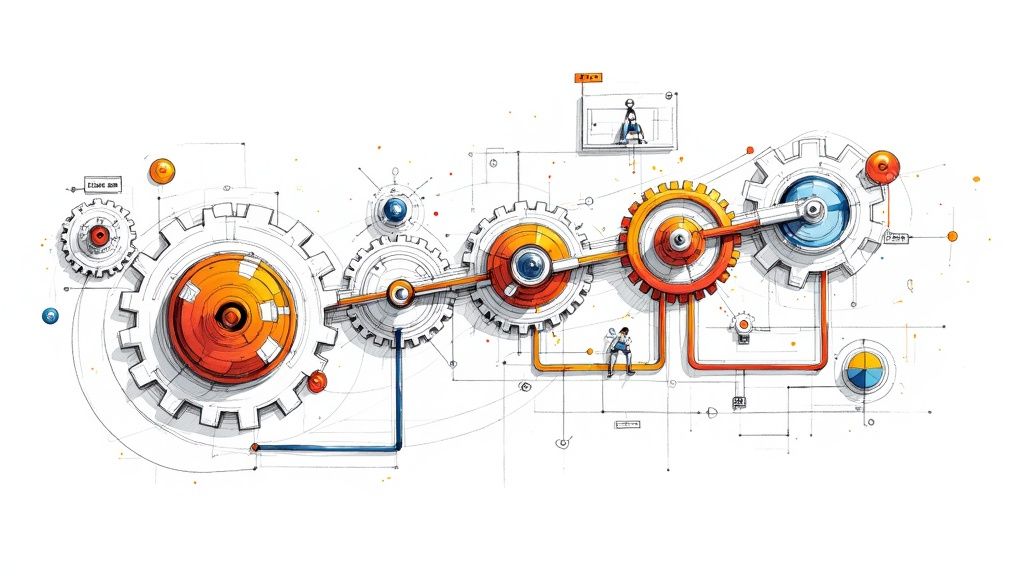
Understanding Modern CI/CD Pipeline Fundamentals

Software teams are delivering code faster and more reliably than ever before thanks to CI/CD pipelines. These automated systems have replaced manual deployment processes, giving organizations the ability to ship new features quickly while maintaining quality. Understanding how these pipelines work is essential for any development team.
Defining CI/CD
A CI/CD pipeline moves code automatically from a developer's computer all the way to production servers. When developers commit new code, the continuous integration (CI) part automatically builds and tests it to catch problems early. The continuous delivery/deployment (CD) portion then prepares and releases that code to users. Think of it like an assembly line for software - each piece moves smoothly from one stage to the next.
The numbers show just how much CI/CD improves software delivery. Teams using CI see 55% fewer defects in their code. After adopting CI/CD, companies report 40% fewer issues in production. Automated testing, which is built into these pipelines, finds bugs 45% faster and increases test coverage by 30%. Check out more data here: DevOps Statistics.
Key Components of a Modern CI/CD Pipeline
Every CI/CD pipeline needs certain core tools to function. Version control systems like Git track all code changes and let teams work together smoothly. Build automation tools like Jenkins or GitLab CI compile and package the code. Testing frameworks run different types of tests to verify quality. Finally, deployment tools push the finished code out to servers automatically.
Best Practices for CI/CD Pipelines
To get the most from your CI/CD pipeline, follow these proven approaches:
- Make small, frequent code commits rather than big changes
- Keep the main code branch stable and ready to deploy
- Automate every step possible, from testing to server setup
- Set up good monitoring to catch issues quickly
- Document the pipeline setup and processes
These guidelines help teams deliver high-quality software consistently without getting bogged down in manual tasks. With proper CI/CD practices in place, shipping new features becomes smooth and reliable.
Measuring Success: Essential Pipeline Metrics and KPIs

Getting your CI/CD pipeline up and running is only the first step. The real challenge lies in measuring how well it performs and supports your development goals. Like any process, you need solid data to make smart decisions about improvements. Let's explore the key metrics and KPIs that matter.
Identifying Key Metrics
The right metrics give you clear insights into your pipeline's health. Here are the most important ones to track:
- Build time: How long it takes to compile and package code
- Deployment frequency: Number of releases over time
- Success/failure rates: Overall pipeline reliability
- Mean time to recovery (MTTR): Speed of fixing issues
- Code coverage: Quality and testing thoroughness
- Lead time: Time from code commit to deployment
Setting Clear Benchmarks
Raw numbers only tell part of the story. You need defined benchmarks to gauge improvement. For example, you might target:
- Build times under 10 minutes
- Multiple daily deployments
- 95%+ success rate
- MTTR under 1 hour
Pick realistic targets that align with your team's goals and capabilities. This creates a clear framework for measuring progress.
Making Data Actionable
Numbers are meaningless without analysis and action. Good visualization tools help spot trends - like gradually increasing build times that may signal process bottlenecks. Use these insights to drive specific improvements:
- Optimize slow build steps
- Enhance test automation
- Upgrade infrastructure when needed
Learn more about effective monitoring approaches in this guide to Mastering CI/CD Monitoring.
Building Useful Dashboards
A well-designed dashboard gives you instant pipeline visibility. Include:
- Trend graphs showing key metrics over time
- Color-coded status indicators
- Clear presentation of current vs target performance
- Real-time alerts for issues
Make it a central hub for tracking and improving your CI/CD process.
Driving Team Improvement
Metrics work best when paired with strong team collaboration. Regular pipeline performance reviews help:
- Identify bottlenecks and opportunities
- Get everyone aligned on goals
- Build shared ownership of the process
For example, using Mergify can boost alignment by automating merges and providing clear pipeline status updates.
When you combine smart metrics, clear benchmarks, and strong teamwork, your CI/CD pipeline becomes more than just automation - it becomes a powerful engine for delivering quality software quickly and reliably. Let the data guide your continuous improvement journey.
Building an Automated Deployment Pipeline That Scales
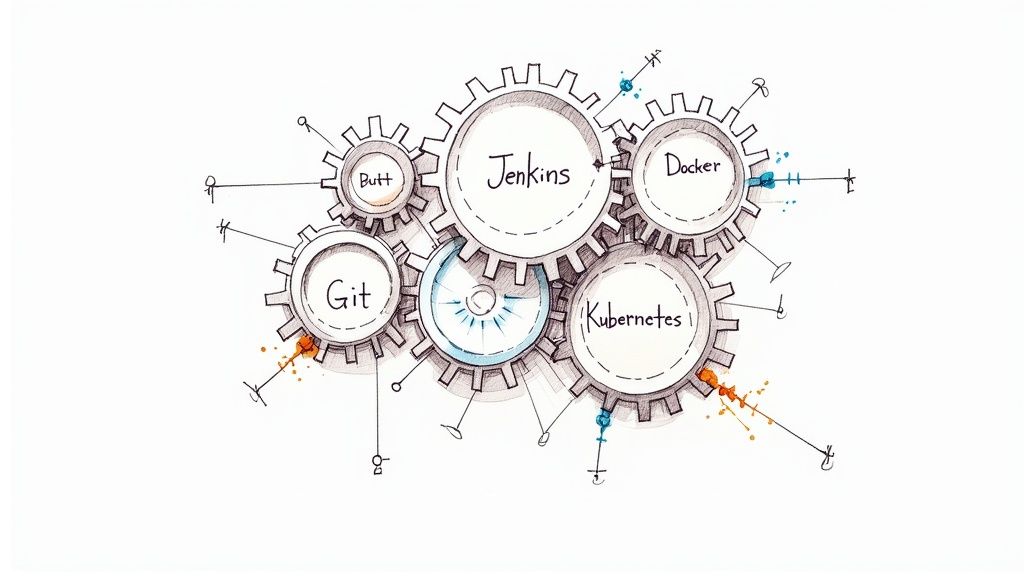
A well-designed CI/CD pipeline needs more than just automation - it requires thoughtful planning to support your team's growth. Let's explore how to build deployment processes that stay reliable and efficient as your projects expand.
Identifying Automation Opportunities
Start small by focusing on the tasks that slow down your team or often lead to mistakes. The most impactful areas to automate first include:
- Testing: Run unit, integration, and regression tests automatically
- Deployment: Push code updates to different environments without manual steps
- Infrastructure: Set up and configure servers through code
This targeted approach helps you see quick wins in your development workflow.
Overcoming Scaling Challenges
When your pipeline starts handling more work, you'll need strategies to maintain speed and stability:
- Parallel processing: Run multiple tests and deployments at the same time
- Resource allocation: Add or remove computing power based on current needs
- Caching: Save build artifacts to skip redundant work
Tools like Mergify can help manage these challenges. Its merge queue feature helps teams process multiple code changes smoothly, even during busy periods.
Implementing Robust Error Handling
Your pipeline needs to handle problems gracefully as it grows. Key features to add:
- Automated rollbacks: Return to the last working version if something breaks
- Alerting and notifications: Let the right people know when issues occur
- Detailed logging: Capture enough information to quickly fix problems
Recent research highlights why this matters - a study by Armory and Gartner Peer Insights found that 48% of teams want better error handling to reduce failures and recovery time. Another 41% seek to cut costs by reducing manual fixes. Read more in The Current State of Continuous Deployment.
Building Self-Healing Pipelines
The next step is creating a self-healing pipeline that can fix common issues on its own:
- Automated diagnostics: Find the root cause of failures
- Automated remediation: Apply pre-defined fixes for known problems
While perfect self-healing is still a work in progress, even basic automatic recovery features can make your pipeline more reliable and reduce team stress. By applying these practices thoughtfully, you'll build a deployment system that grows alongside your projects while keeping releases quick and dependable.
Creating a Culture of Pipeline Excellence
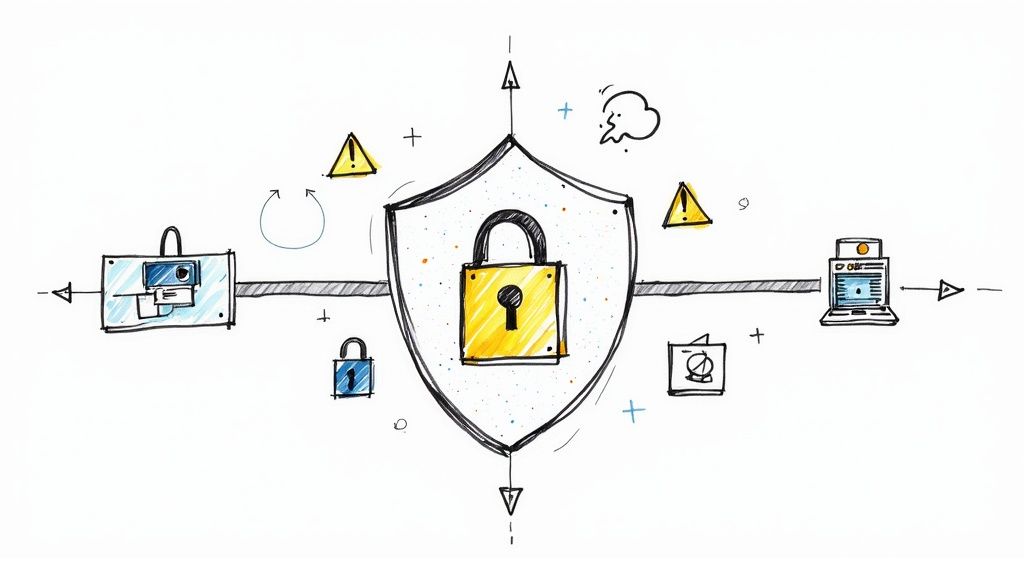
Building great CI/CD pipelines goes beyond just picking the right tools. Success comes from teams working together with shared goals and responsibilities. Let's explore how to build this collaborative environment.
Establishing Shared Ownership
The best development teams know that pipeline success requires everyone's involvement. When development, operations, and security teams understand how their work affects each other, they feel personally invested in delivering high-quality software. This shared mindset creates natural accountability and better results.
Improving Communication and Visibility
Clear communication helps teams work better together. Regular check-ins, team chat channels, and shared status dashboards keep everyone informed about pipeline health. Tools like Mergify help by showing the status of code changes and automating merges, which reduces confusion and keeps teams in sync. For instance, teams can easily track pending code changes through Mergify's merge queue feature.
Knowledge Sharing and Feedback Loops
Teams grow stronger when they learn from each other and openly discuss what works and what doesn't. This might include reviewing incidents together, running training sessions, or building a shared knowledge base. Regular pipeline performance reviews and monitoring meetings help spot issues early and keep teams focused on improvement. Want to learn more about monitoring best practices? Check out this guide to CI/CD pipeline monitoring.
Overcoming Collaboration Challenges
Working together isn't always easy. Teams often face issues like mixed messages, competing priorities, or resistance to new ways of working. Here's how to handle these challenges:
- Define clear roles: Make sure everyone knows their responsibilities
- Create safe spaces: Help people feel comfortable sharing concerns
- Set up ways to solve conflicts: Have a plan for working through disagreements
- Highlight team wins: Thank people for their good work to encourage more collaboration
When teams share ownership, communicate openly, and keep learning together, they can make their CI/CD pipelines truly shine and deliver better software more reliably.
Mastering Pipeline Testing Strategies
Building a solid CI/CD pipeline goes hand-in-hand with testing. Testing isn't an afterthought - it should be woven into every stage of your pipeline. Let's look at practical ways to build testing strategies that keep quality high without slowing you down.
Finding the Sweet Spot in Test Coverage
The ideal test coverage finds middle ground between catching problems and running quickly. While complete coverage sounds great, it's usually not practical or needed. Instead, focus your testing on what matters most - the key user journeys and core features that drive your business. This targeted approach helps catch critical issues while keeping your pipeline moving.
Making Test Automation Work
Test automation is essential for CI/CD success. Start by automating the basics - unit tests, integration checks, and regression testing. Mergify can help by automatically running tests whenever code changes. This frees up your team to tackle more interesting challenges while ensuring consistent test coverage.
Creating Tests That Last
Your tests need to grow alongside your code. Build test suites that are clear and adaptable. Break tests into logical modules so you can fix issues in one area without affecting others. Stay away from tests that depend too heavily on specific test data or environments - they tend to break easily. Well-designed tests make your pipeline more reliable long-term.
Taking Testing Further
Consider adding more testing types as you mature. Performance testing helps identify speed issues before they affect users. Security testing catches vulnerabilities early. These extra checks make your application more dependable and secure.
Growing Your Testing Strategy
As your team expands, your testing needs to keep up. Run tests in parallel to get faster feedback. Mergify helps manage multiple test runs by spreading the load across different machines. Use good monitoring tools to track how tests perform and spot areas to improve. A solid testing approach that can grow ensures quality remains strong even as projects get more complex. Following these key practices helps create testing that fits smoothly into your CI/CD pipeline while maintaining both quality and speed.
Securing and Optimizing Your Pipeline Performance
A fast and secure CI/CD pipeline forms the foundation of reliable software development. Let's explore practical ways to speed up your pipeline while keeping security tight.
Balancing Speed and Security
Building a great CI/CD pipeline requires finding the right balance between speed and security. DevSecOps practices help by making security checks a core part of development, not just an afterthought. The goal is to catch issues early while keeping the development process smooth and efficient.
Optimizing Pipeline Speed
Here are key ways to make your builds and deployments faster:
- Caching: Save time by storing frequently used dependencies and build artifacts locally. Think of it like keeping your most-used tools within arm's reach.
- Parallel Execution: Run multiple tests and builds at once to get more done in less time. It's similar to having several team members tackle different tasks simultaneously.
- Resource Management: Make sure your pipeline has enough computing power, memory, and network bandwidth. Just like a car needs fuel to run efficiently, your pipeline needs adequate resources.
Implementing Security Best Practices
Build security into every step of your pipeline:
- Secure Configuration: Keep sensitive data like API keys and passwords safe using tools like HashiCorp Vault or AWS Secrets Manager. These act as digital vaults for your critical information.
- Security Scanning: Check your code and dependencies regularly with tools like Snyk or SonarQube. This helps spot potential issues before they become problems.
- Access Control: Follow the principle of least privilege - only give people access to what they absolutely need. This prevents unauthorized changes and keeps your pipeline secure.
- Container Security: Build Docker images with security in mind. Use minimal base images, scan for vulnerabilities, and sign images to verify their authenticity.
Real-World Examples and Impact
Companies using these practices have seen real results. One team reduced their build times by 60% through smart caching and parallel testing. Another saw significantly fewer security incidents after adding regular vulnerability scans to their pipeline.
By carefully balancing speed and security measures throughout your CI/CD pipeline, you can ship quality software faster without compromising safety.
Want to improve your CI/CD process? Learn how Mergify can help your team achieve CI/CD excellence.


